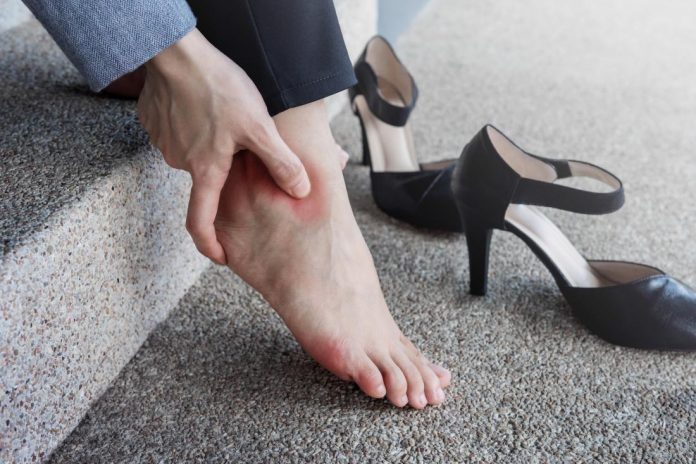The high heel wasn’t originally created as an accessory to wear with pencil skirts. In fact, according to Ancient Origins, the first heels as depicted on a 9th century Persian bowl were created for male horse riders as a way to stop their feet from slipping from stirrups. Of course, at some point in the 1600s, women adopted the trend and the rest, as they say, is history. From tiny kitten heels to sky-high platforms, high heels have been a staple in female wardrobes for centuries.
Obviously, the heel isn’t going anywhere. It’s the gold standard in women’s footwear for everything from the board room to the red carpet. But though they’re definitely stylish, high heels can cause major problems for both your feet and your budget.
Heels are the main culprit in millions of foot and ankle complaints across the country, but women still wear the shoes with abandon. Whether you’ve noticed a constant pain in your foot or your bank account is dwindling as your shoe collection grows, understanding the true cost of high heels might be enough to make wearing your favorite shoes more of a treat than an everyday occurrence. Consider the following disadvantages and dangers.
Effects of wearing high heels:
1. Joint Pain
Unlike other types of shoes, heels lack any significant shock absorption. Wearing heels also stops your foot from naturally rotating as you walk, since they’re forced into a straight and unbending position. This causes the knee to absorb the brunt of every step, which can lead to severe joint pain and an exacerbation of arthritis symptoms, according to the American Association of Orthopaedic Surgeons. Your ankle also absorbs some of the shock as well, so don’t be surprised if a long day in heels leaves your joints feeling stiff and sore.
2. Callouses
When you push your feet into too-tight shoes or shoes that force your feet into unnatural shapes (such as pointy-toe shoes), you create pressure on the sides of your feet and toes. Over time, the rubbing and pushing from your favorite heels can lead to a hardening of the skin. It may not be a big deal in the winter, but come summer, you might be too embarrassed to don your strappy sandals when your feet are riddled with callouses.
3. Shortened Achilles Tendon
This might be one of the more worrying side effects of wearing heels: According to Live Science, women who wear heels over a long period of their lives actually shorten their Achilles tendon. With the heel in the lifted position, heels can actually create a physiologically change in the muscles and tendons around the ankles. That means, when barefoot or wearing flats and shoes that cause the heel to reach the ground, the wearer can feel immense pain and stretching.
4. Lower Back Pain
Heels actually cause your pelvis to push forward when you walk or stand, placing tremendous pressure on the lower back and causing lingering pain.
5. Lack of Cushion
When you wear heels, your entire body’s weight is on the ball of your foot and your heel is only for balance. Surprisingly, this can cause a wearing away or pushing away of the natural padding you have on the ball of your foot. In fact, according to Elle, some plastic surgeons actually inject Botox into patients’ feet (they call it a “stiletto lift”) to add padding and make heels more comfortable. Otherwise, without extra padding on the ball of your foot, heels can become immensely uncomfortable, and even painful.
6. Falling and Sprained Ankles
When you wear flats, your weight is spread evenly between the ball of your foot and the heel, with little pressure on your ankle. Unfortunately, heels cause such an imbalance between the heel and the ball. The ankle become the fulcrum for your entire body. Since ankles aren’t built to take that kind of pressure, falls and twisted or sprained ankles can be pretty common. It’s nearly impossible to perfectly balance, especially in very high heels, so any bump in the pavement can feel like a 10-foot wall when you’re trying to scale it in your favorite pumps.
7. Ingrown Toenails
Most heels have a pointy or almond-shaped toe, despite the fact that the end of your foot is actually more square. And it’s the biggest and littlest toes that take a lot of the pressure as they press against the sides and the end of the shoe.
High heels cause your feet to slide down and crush your toes, leading to ingrown toenails. Ingrown toenails occur when the side of your toenail starts growing into your flesh, and it can be seriously painful.



























